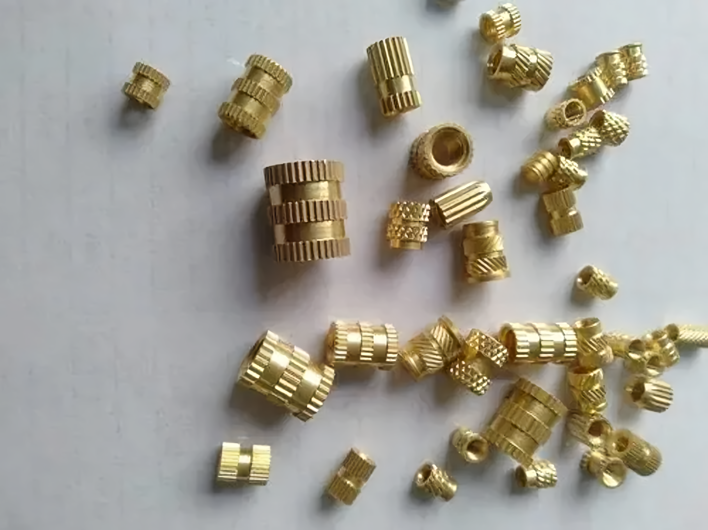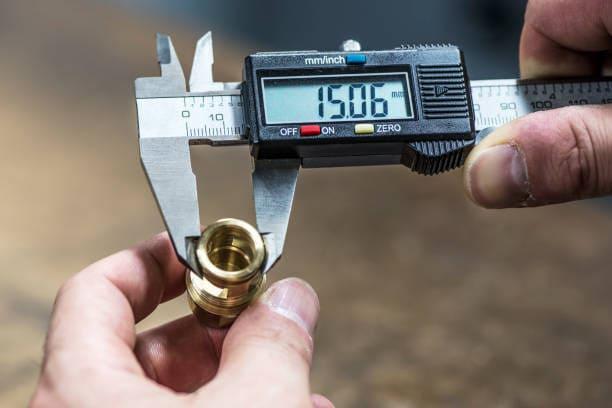Industry news
This article explores custom brass nuts manufacturing, highlighting their advantages, common applications, production techniques, quality considerations, and real-world case studies. From electrical assemblies to aerospace components, brass fasteners provide durability, conductivity, and aesthetic appeal.
.webp)
From electrical assemblies to precision machinery, brass nuts and brass inserts are essential components that combine durability, machinability, and corrosion resistance. Unlike standard steel fasteners, brass fasteners provide excellent conductivity, non-magnetic properties, and aesthetic appeal, making them popular in both industrial and consumer applications.
This article covers the essentials of custom brass nuts manufacturing including production methods, quality considerations, and common applications while sharing insights gained from nearly two decades of experience in machining precision brass components.
A brass nut is a fastening component made from a copper-zinc alloy, valued for its corrosion resistance, non-magnetic properties, good electrical conductivity, and ease of machining compared to steel. While not as strong as steel nuts, brass nuts are widely used in electrical and electronic assemblies, plumbing fittings, and decorative hardware, where moderate strength, durability, and a polished appearance are important.
Brass offers a unique combination of properties that make it ideal for fasteners and inserts:
Discover techniques and applications of Brass Turning in our comprehensive article.

Brass fasteners are used across industries where precision, reliability, and durability are critical.
In the electrical and electronics field, electrical brass nuts are widely used in switchgear, connectors, and grounding systems. Their excellent conductivity allows them to create secure and stable electrical connections, while their non-magnetic properties prevent interference in sensitive circuits. For example, a grounding terminal fitted with brass nuts ensures both safety and long-term reliability in high-voltage equipment.
Within the automotive industry, corrosion-resistant brass nuts play a vital role in areas like fuel systems and dashboard assemblies. Brass withstands exposure to gasoline, oils, and moisture better than steel, which means these fasteners maintain their grip without rusting. A common use is securing components in the fuel line, where brass nuts provide both a tight seal and resistance to harsh operating conditions.
In plumbing and fluid systems, brass fasteners and small brass nuts are trusted for creating leak-proof, rust-free connections. They are often used in pipe fittings, valves, and sanitary systems, where durability is crucial. For instance, brass nuts used to fasten flexible hose connectors help ensure water-tight seals that resist wear and corrosion over time.
For aerospace and defense applications, engineers depend on precision brass components and CNC brass parts for sensitive instrumentation. These parts are machined to exact tolerances, ensuring accuracy even under vibration and extreme temperature shifts. A practical example is brass inserts in navigation instruments, where consistent performance is non-negotiable.
Finally, in consumer products, furniture, and hardware, machined brass parts created through brass casting, brass nut turning, and brass forming services add both strength and elegance. Brass fasteners not only hold components securely but also provide an attractive finish, which is why they are often chosen for visible joints in furniture or decorative hardware like handles and fittings.
Production techniques for brass nuts include precision CNC machining, nut turning, casting, and forming services.
Learn more about precision and efficiency in Metal Milling through our insights guide.
Material Grades
Dimensional Accuracy
Surface Finish
Strength & Durability
Discover advanced methods and advantages of Copper turning in our full guide.
Manufacturing brass nuts can present several challenges that impact quality and performance. One common issue is burr formation during machining, especially on small brass nuts, which can affect assembly and precision. This is effectively solved with automated deburring systems and tumbling processes that smooth edges and maintain consistency across large production runs.
Another frequent challenge is thread inaccuracy, which usually results from tool wear during high-volume machining. When threads are not precise, fasteners may fail to fit securely, leading to reliability issues in critical applications. This can be controlled by scheduling regular tool changes, using high-quality cutting tools, and verifying thread quality with precision gauges throughout the production process.
Finally, defects like cracking in thin-walled nuts and surface oxidation can also occur. Thin sections are prone to stress during forming, but proper annealing and careful material selection help reduce brittleness. Meanwhile, oxidation is minimized by applying protective coatings and ensuring sealed storage conditions, which keep brass nuts durable and ready for long-term use in demanding environments.

Industry Trends in Brass Fastener Manufacturing
A plumbing component manufacturer was experiencing a 12% scrap rate on small brass nuts due to thread inaccuracy and burr formation. By upgrading to CNC turning with in-process tool monitoring and adding a secondary deburring station, Entag helped reduce scrap to 2%. The solution also cut inspection time in half, improving overall delivery speed.
At Entag, we specialize in custom brass nuts manufacturing, CNC machining, and precision forming services that solve real production challenges. Our mission is to support manufacturers with reliable, high-quality brass components, while reducing waste, improving efficiency, and ensuring on-time delivery for every order.
Practical Tips for Buyers and Engineers
Learn more about accuracy and productivity with turning machining in our resource article.
Q1: Are brass nuts suitable for outdoor use?
Yes, but they are best in moderate environments. For marine or harsh conditions, stainless steel may be preferable.
Q2: What’s the difference between brass inserts and brass nuts?
Brass inserts are designed to be embedded into other materials (like plastic), while brass nuts are standalone fasteners.
Q3: How small can brass nuts be manufactured?
With CNC brass part production, nuts as small as M1.5 can be machined accurately.
Q4: Why are brass nuts preferred in electrical applications?
Because of their high electrical conductivity and non-magnetic properties.
Conclusion
Custom brass nuts manufacturing combines material expertise, CNC machining, and precision quality control to deliver durable and corrosion-resistant fasteners. From electrical assemblies to plumbing systems, brass fasteners remain a trusted choice due to their machinability, conductivity, and aesthetic appeal.